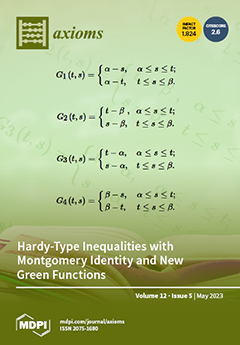For the characterization of multipliers of
or more generally, of
for some locally compact Abelian group
G, the so-called Figa-Talamanca–Herz algebra
plays an important role. Following
[...] Read more.
For the characterization of multipliers of
or more generally, of
for some locally compact Abelian group
G, the so-called Figa-Talamanca–Herz algebra
plays an important role. Following Larsen’s book, we describe multipliers as bounded linear operators that commute with translations. The main result of this paper is the characterization of the multipliers of
. In fact, we demonstrate that it coincides with the space of multipliers of
. Given a multiplier
T of
and using the embedding
, the linear functional
is bounded, and
T can be written as a moving average for some element in the dual
of
. A key step for this identification is another elementary fact: showing that the multipliers from
to
are exactly the convolution operators with kernels in
for
and
. The proofs make use of the space of mild distributions, which is the dual of the Segal algebra
, and the fact that multipliers
T from
to
are convolution operators of the form
for some uniquely determined
. This setting also allows us to switch from the description of these multipliers as convolution operators (by suitable pseudomeasures) to their description as Fourier multipliers, using the extended Fourier transform in the setting of
. The approach presented here extends to other function spaces, but a more detailed discussion is left to future publications.
Full article




